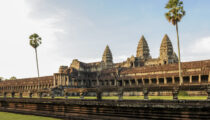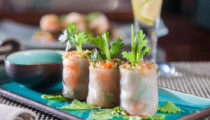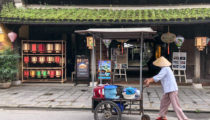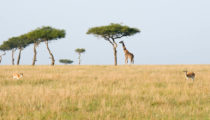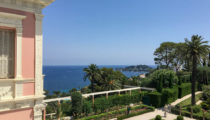October 4, 2013
Just Back: A Private Tour of Vietnam
We recently returned from an incredible private tour of Vietnam, including the highlights of Hanoi, Hue, Hoi An, Saigon and the Mekong Delta.
We traveled from north to south, beginning in Hanoi, the capital. This is the Hanoi Opera House, one of the city’s most beautiful landmarks. It’s located in the French Quarter, an attractive neighborhood filled with colonial-era buildings that house embassies, restaurants and art galleries. Artisans of Leisure can arrange tickets to attend a performance at the opera house, which is a great way to appreciate its interiors.
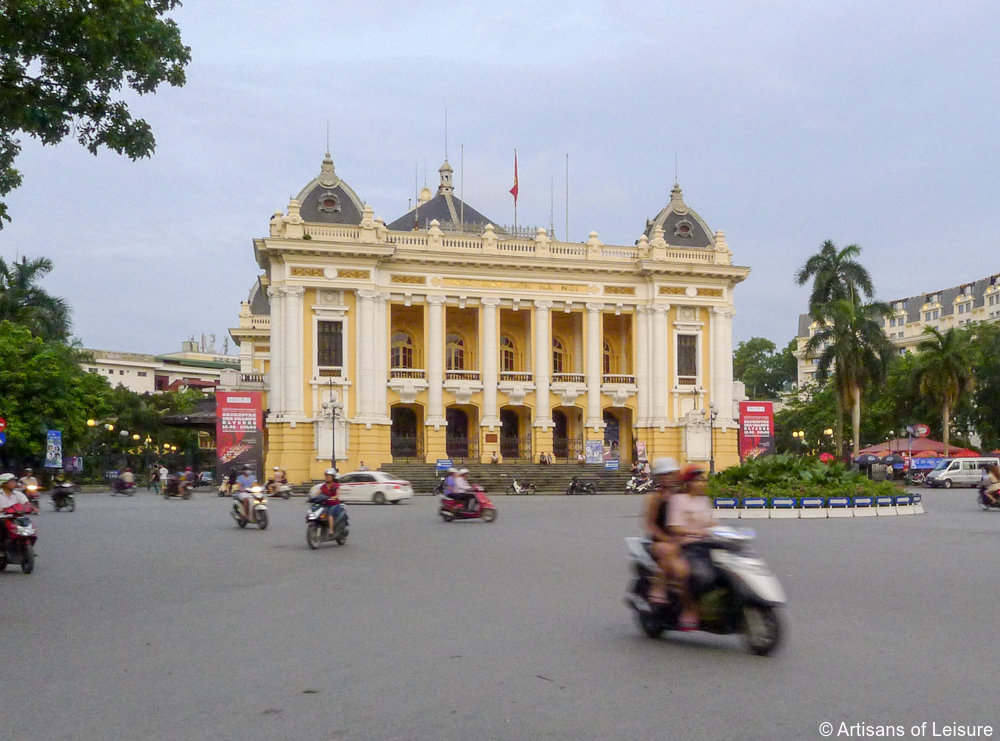
Also in the French Quarter is the Sofitel Legend Metropole Hanoi. Our preferred hotel in the city, it has colonial-era ambience, an interesting history and a long list of illustrious guests.
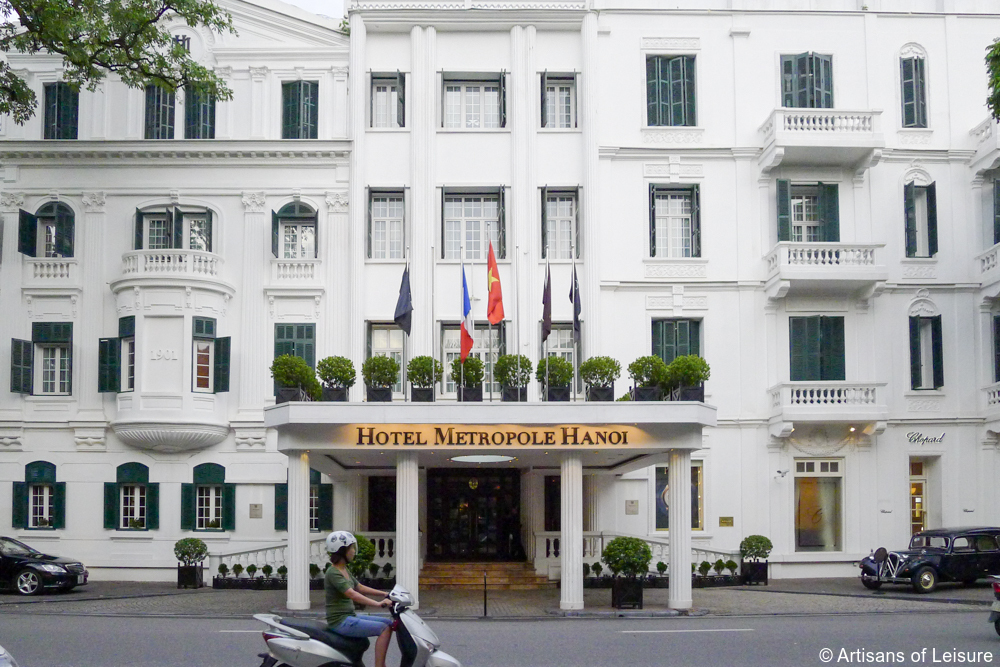
The hotel is next to a park and near picturesque Hoan Kiem Lake. Many locals perform their morning workouts, such as walking and tai chi, in these leafy areas.
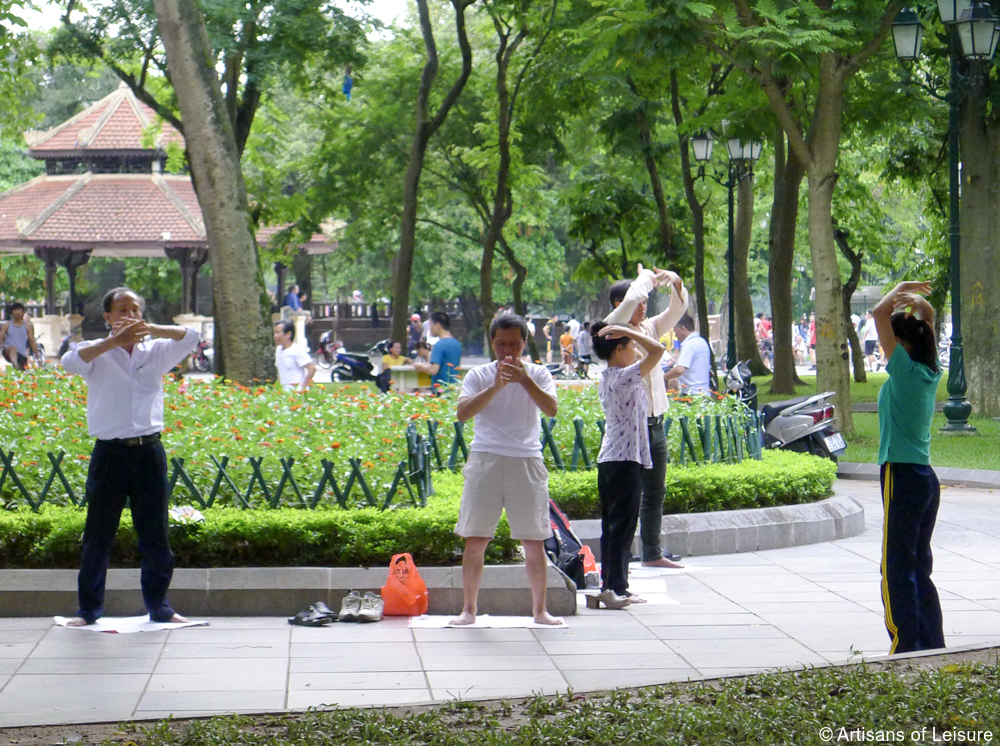
Artisans of Leisure can arrange a private yoga or tai chi lesson, either in a park or at a peaceful temple. We enjoyed a private yoga class under the trees.
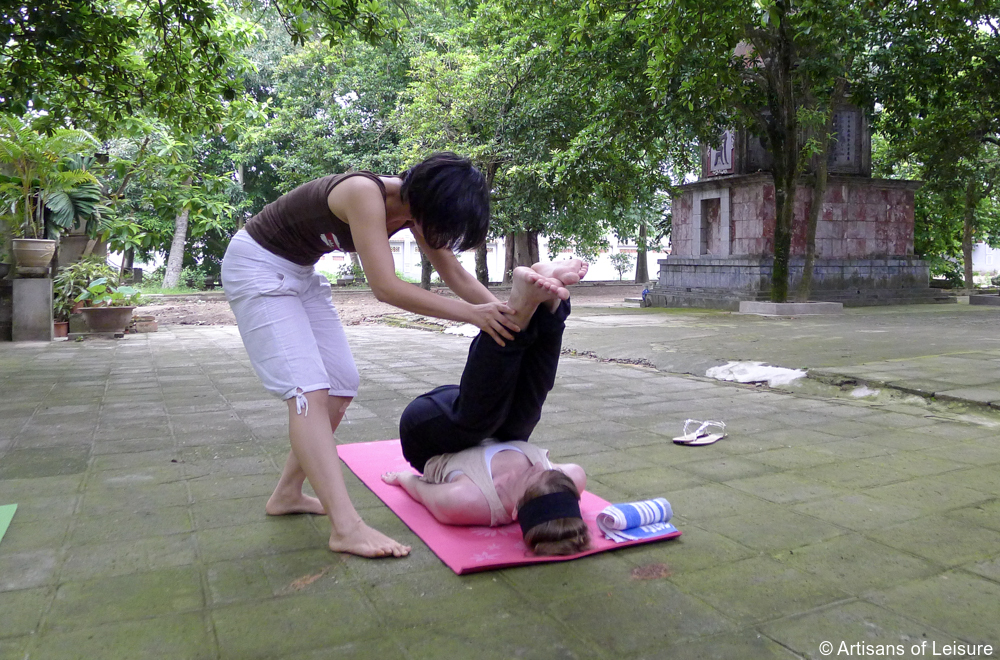
Another option is visiting Ngoc Son Temple, which is on an island in Hoan Kiem Lake. Early risers will have it to themselves.
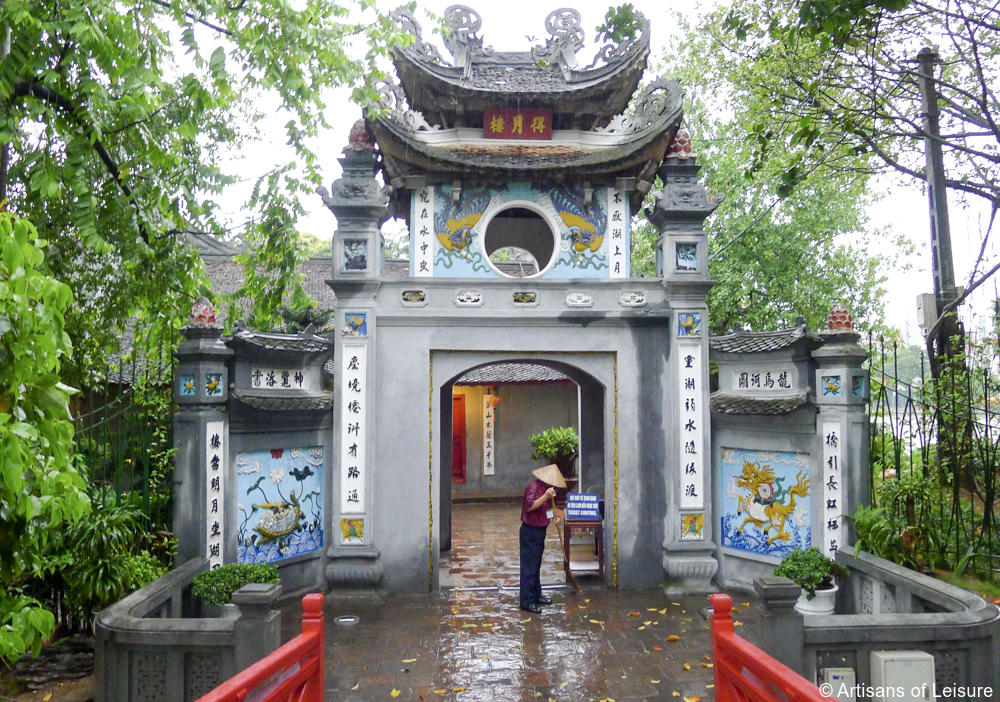
Just north of the lake is Hanoi’s Old Quarter, a bustling neighborhood filled with street food stalls, traditional shops and locals going about their daily lives.
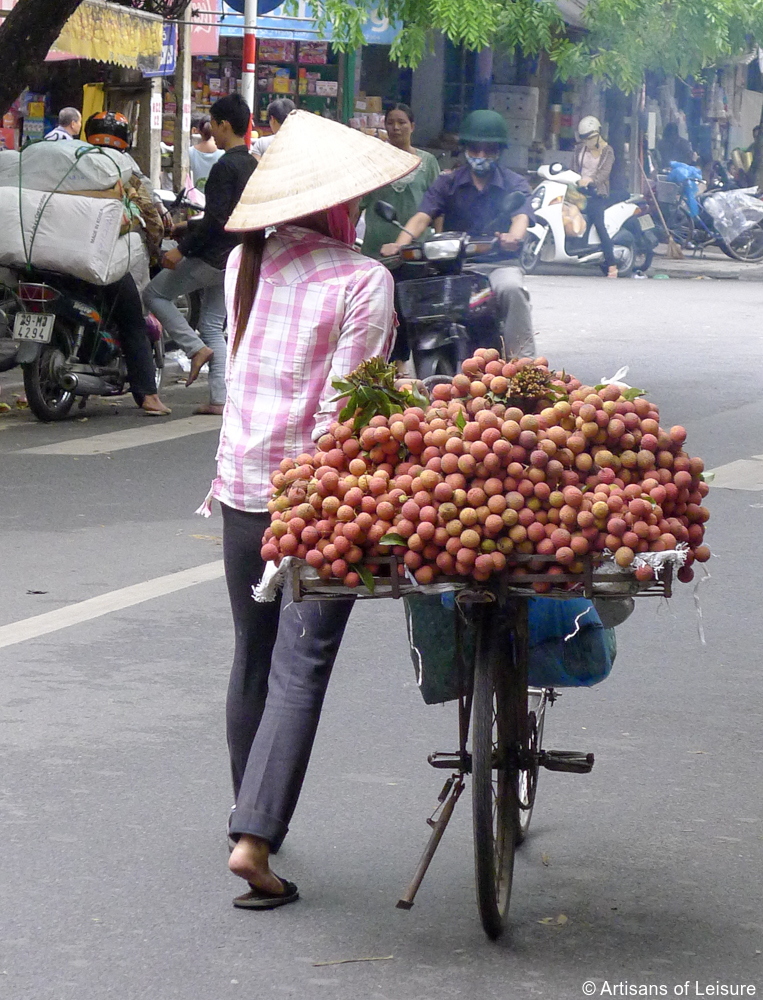
Near the wholesale food market, shops display baskets of colorful Vietnamese essentials like green limes, red chilies, purple shallots and this rainbow of dried legumes.
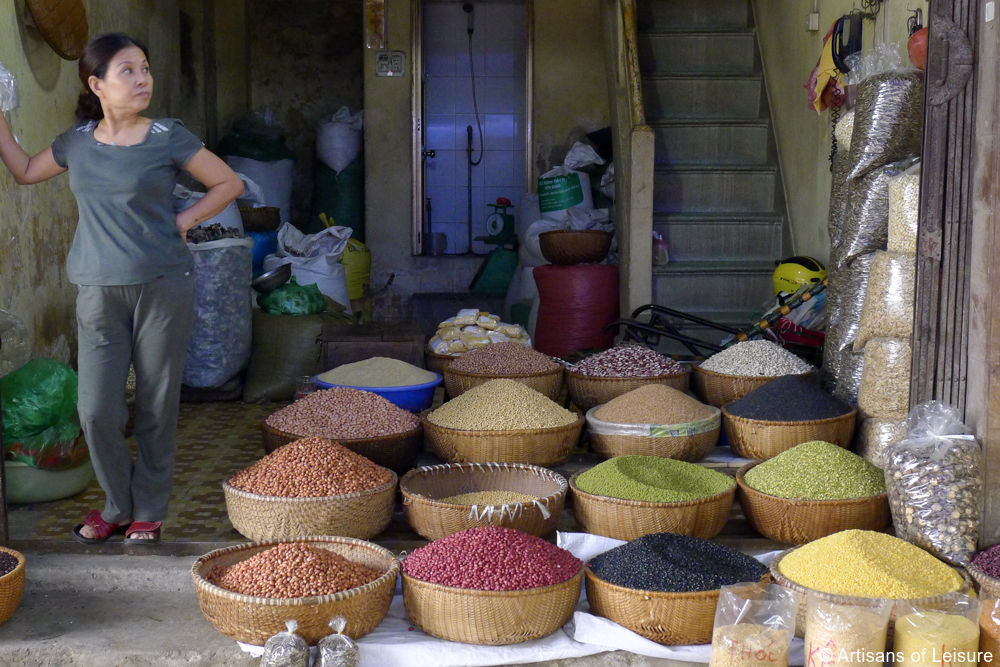
Several art galleries are also in the area, including some of our favorites such as Apricot Gallery, 54 Traditions and Green Palm.
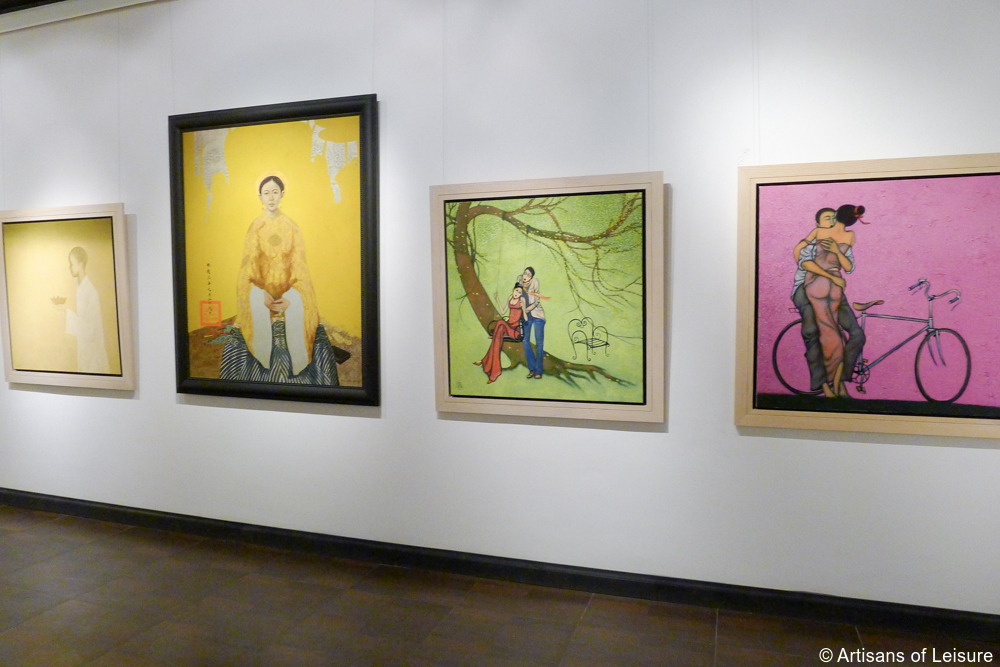
In Hanoi, we also enjoyed fantastic culinary touring, a highlight of Artisans of Leisure’s private Vietnam tours. We visited a market with a culinary expert to learn about typical Vietnamese ingredients and local food culture.
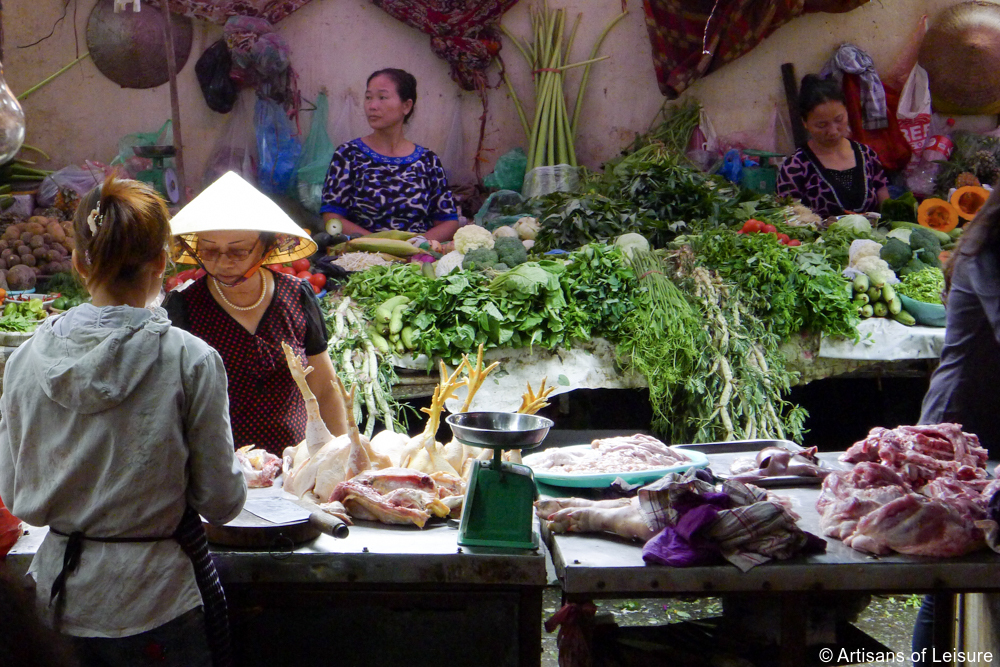
After browsing the market, we had Vietnamese coffee at a cafe. Then, we tried local street food specialties like pho cuon (beef and herbs wrapped in wide rice noodles).
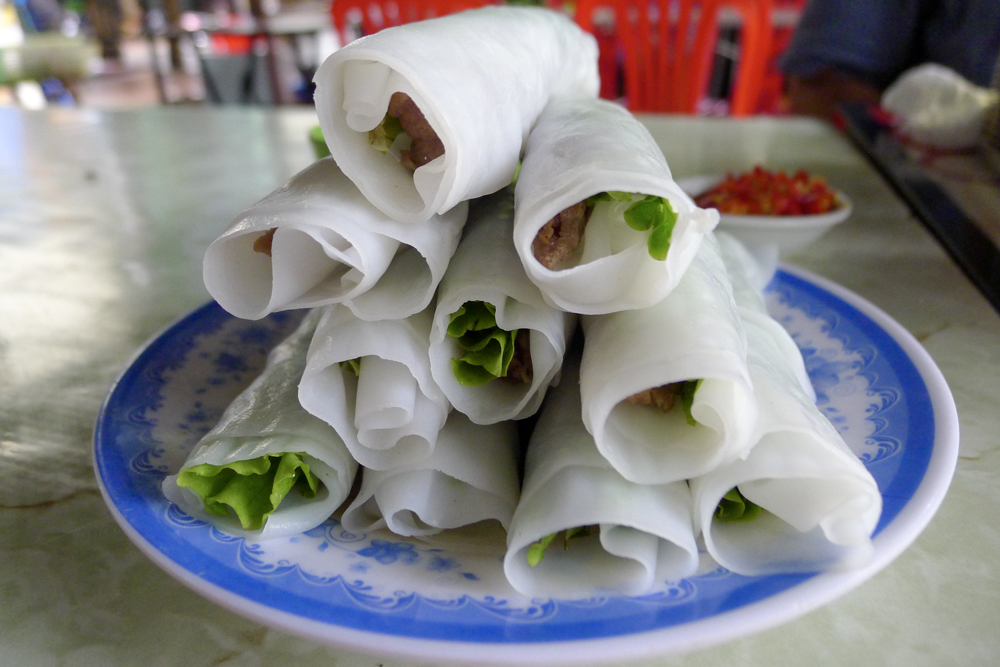
We also took a cooking class in the home of a chef, learning to prepare Vietnamese dishes such as banana flower salad and fried spring rolls. Artisans of Leisure can arrange private cooking classes in destinations throughout Vietnam.
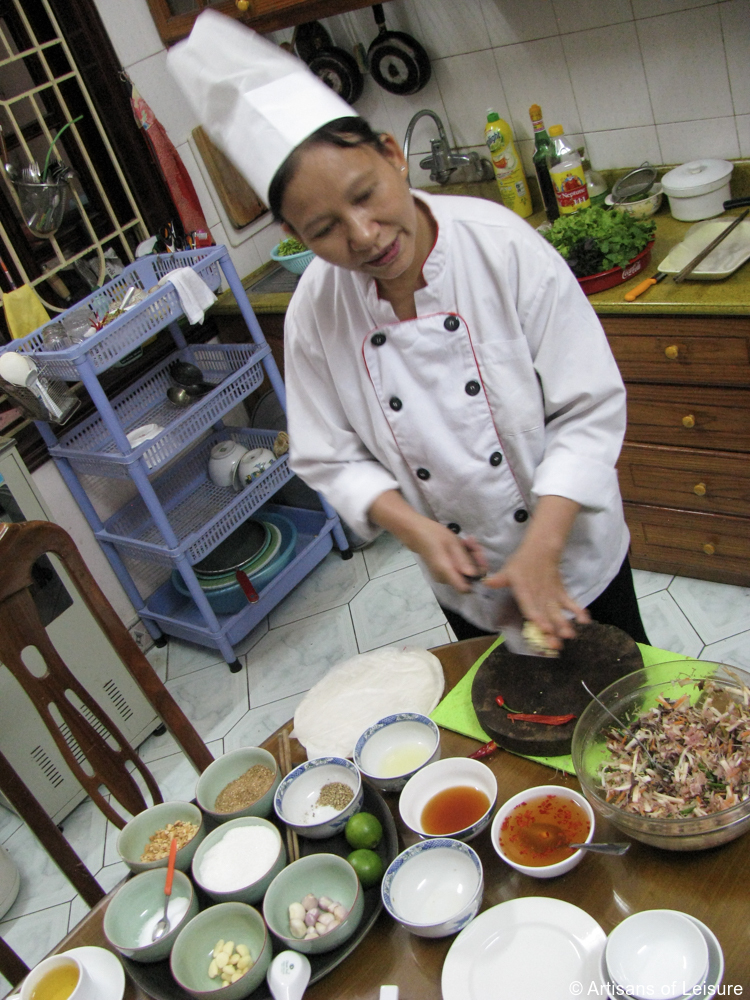
Next, we flew to Hue, a former imperial capital in central Vietnam. We stayed at La Residence Hotel & Spa, an Art Deco-style hotel set among gardens on the banks of the Perfume River. The former residence of the French governor, the original building was constructed in the 1930s and renovated and expanded in recent years.
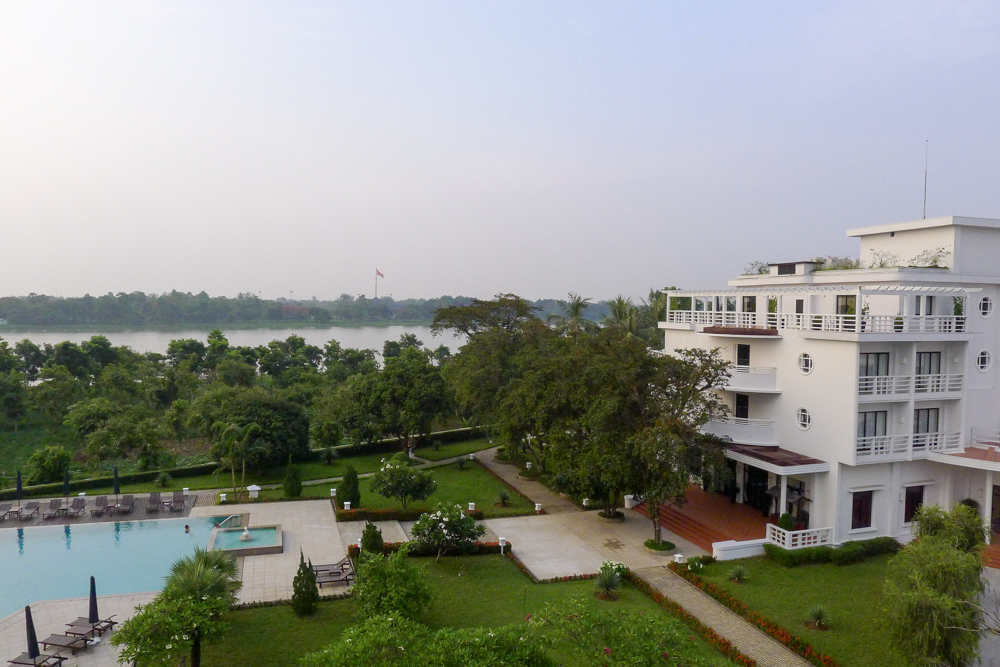
During private touring, we explored the Citadel and Forbidden Purple City, the heart of the imperial capital for more than 140 years and a UNESCO World Heritage Site. Though much of the Citadel was badly damaged during the wars of the 20th century, restoration is ongoing.
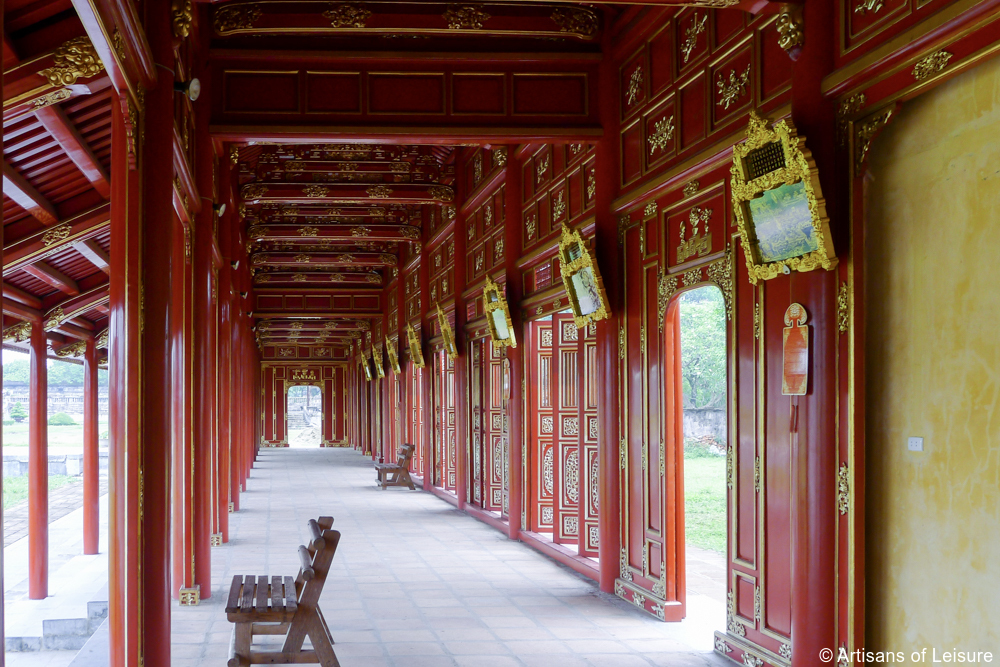 We also visited Thien Mu Pagoda—one of the oldest structures in Hue—to wander the grounds, see novice monks attending classes and enjoy views of the river.
We also visited Thien Mu Pagoda—one of the oldest structures in Hue—to wander the grounds, see novice monks attending classes and enjoy views of the river.
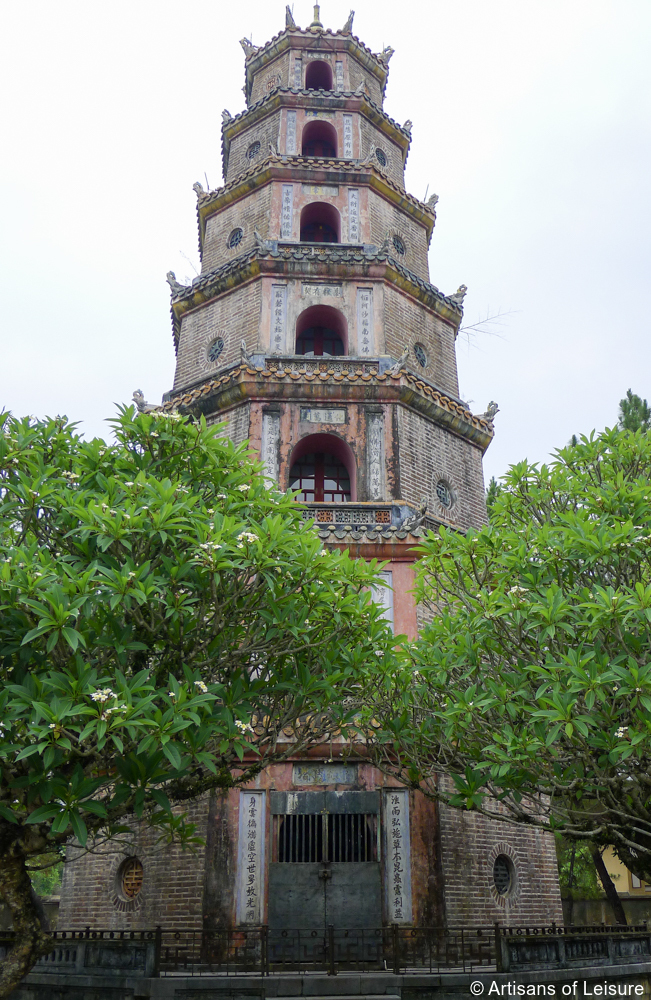
The lavish royal tombs of the emperors are highlights of Hue. Set on a hilltop just outside the city, the Royal Tomb of Khai Dinh has beautiful views over verdant hills and paddy fields. Spectacular mosaic reliefs cover every inch of the interior.
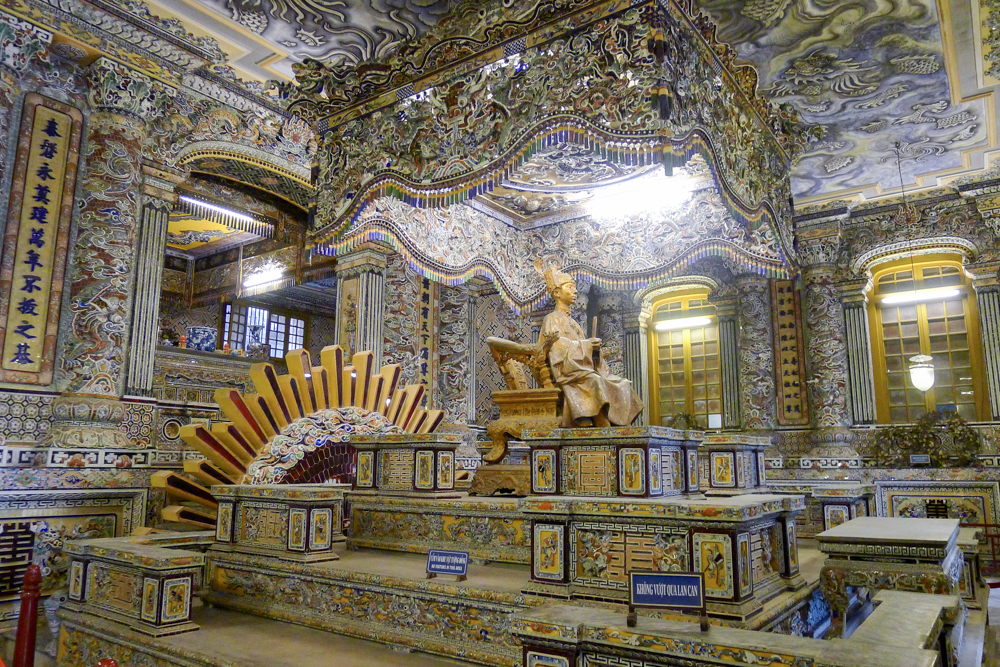 Hue’s Dong Ba Market is one of the most colorful markets in Vietnam. It buzzes with shoppers negotiating the best prices for a wide array of fresh fruit, herbs, vegetables and other ingredients.
Hue’s Dong Ba Market is one of the most colorful markets in Vietnam. It buzzes with shoppers negotiating the best prices for a wide array of fresh fruit, herbs, vegetables and other ingredients.
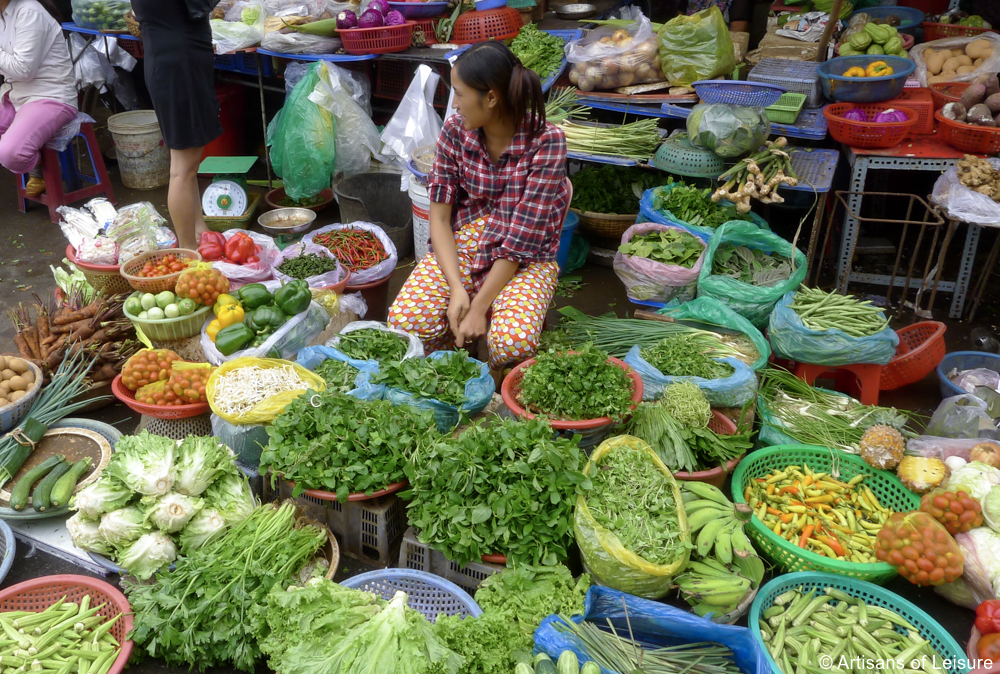
Also in Hue, we visited an orphanage, where we had tea with the head nun. She told us about her life, why she started the orphanage and the programs she runs there.
We can arrange for visitors to help the orphanage in many ways, including volunteering for a day or donating school supplies. Another option is to dine at the vegetarian restaurant inside the orphanage, where the resident teenagers learn to cook and serve. Proceeds from the restaurant benefit the orphanage.
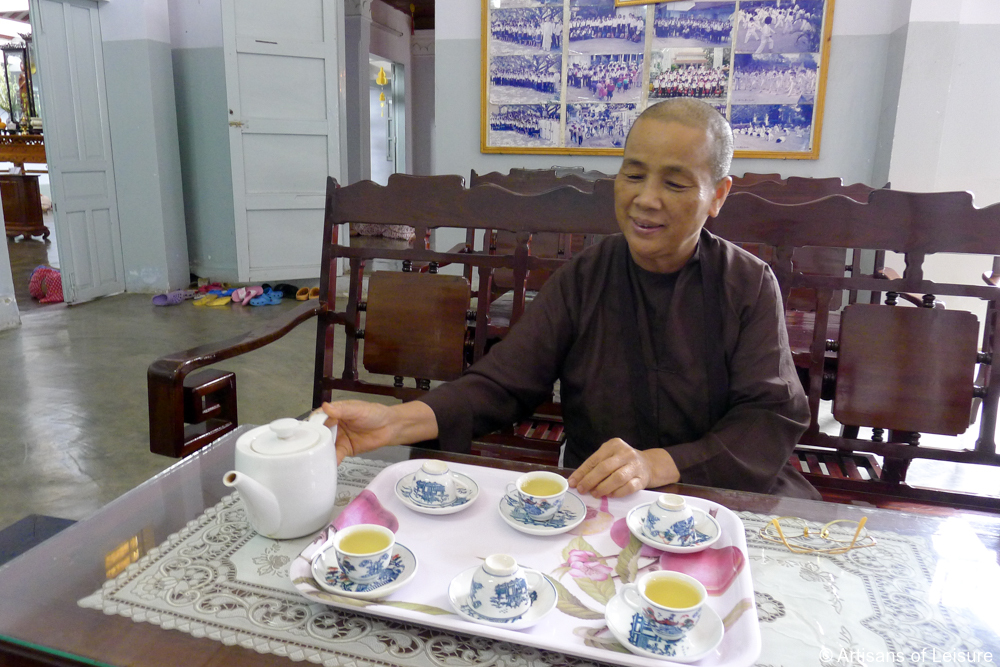
Even though it was supposed to be naptime, this little girl was wide awake and ready to play.

From Hue, we drove south to Hoi An. En route, we stopped in Danang to tour the Museum of Cham Sculpture, which displays interesting artwork from the My Son temple complex in the nearby foothills. We also visited the Marble Mountains, a series of natural caves in which religious devotees have left thousands of offerings.
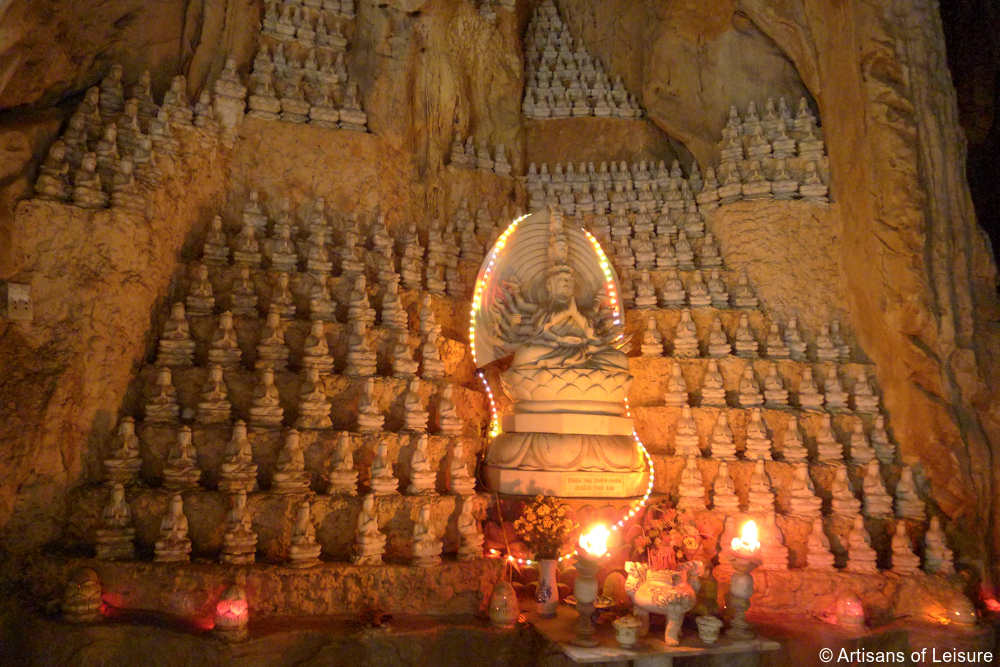
Hoi An is a charming, UNESCO-listed port town along the Thu Bon River. The low-rise architecture is an atmospheric mix of colonial-era buildings, shophouses and temples. This is the Japanese Covered Bridge, a symbol of the city.
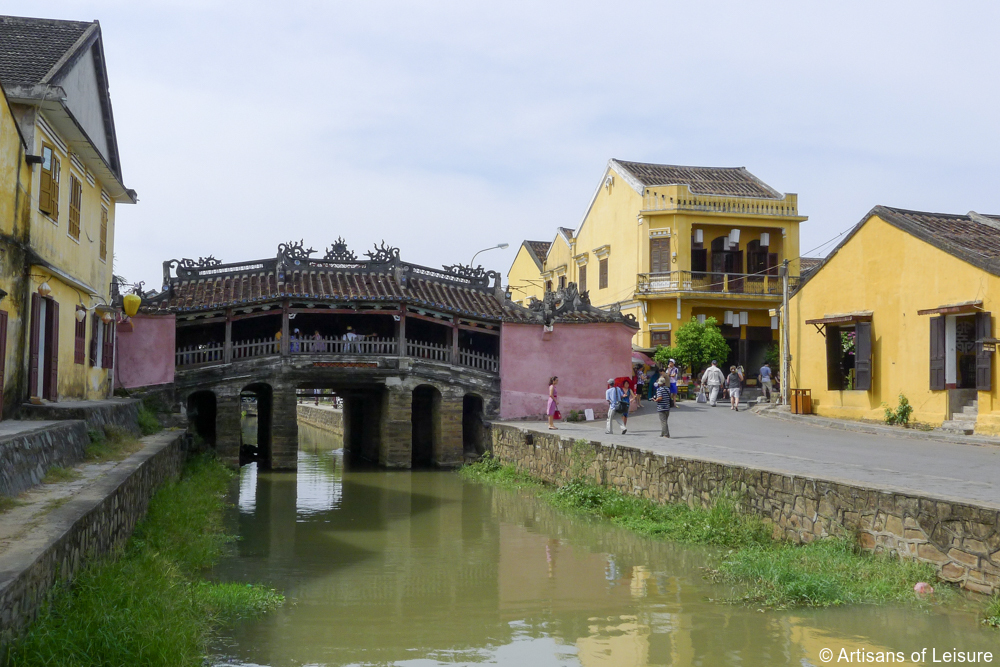
Hoi An is also a great place for shopping. The town is known for quality silk and tailoring, and many travelers like to have a garment made to order. A favorite is a silk ao dai, the elegant traditional dress of Vietnam. Other items to consider are ceramics and lacquerware, like these colorful bowls.
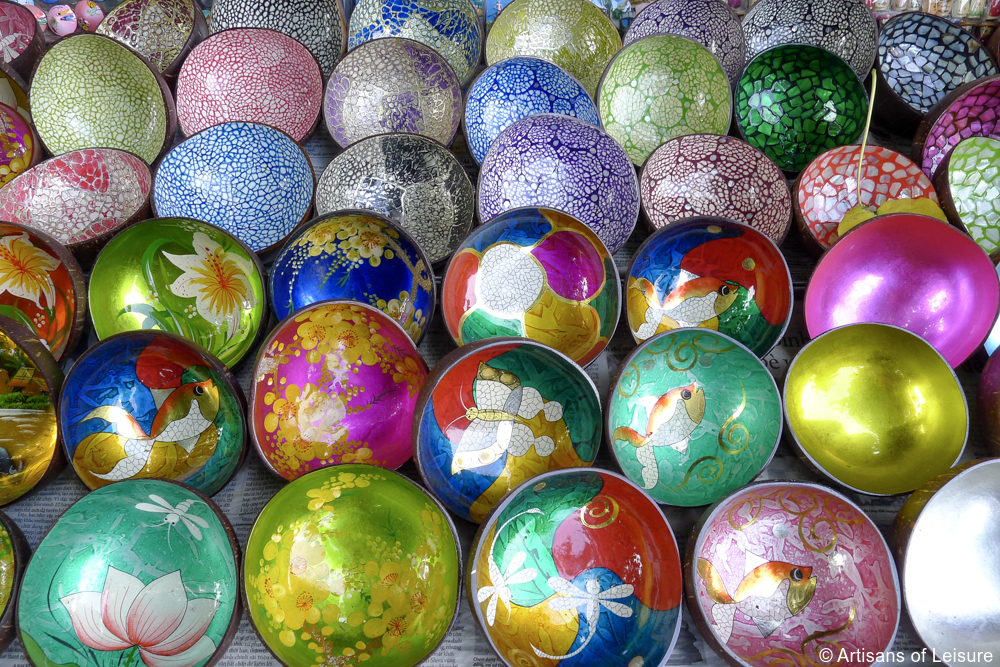
Silk lanterns are another favorite souvenir.
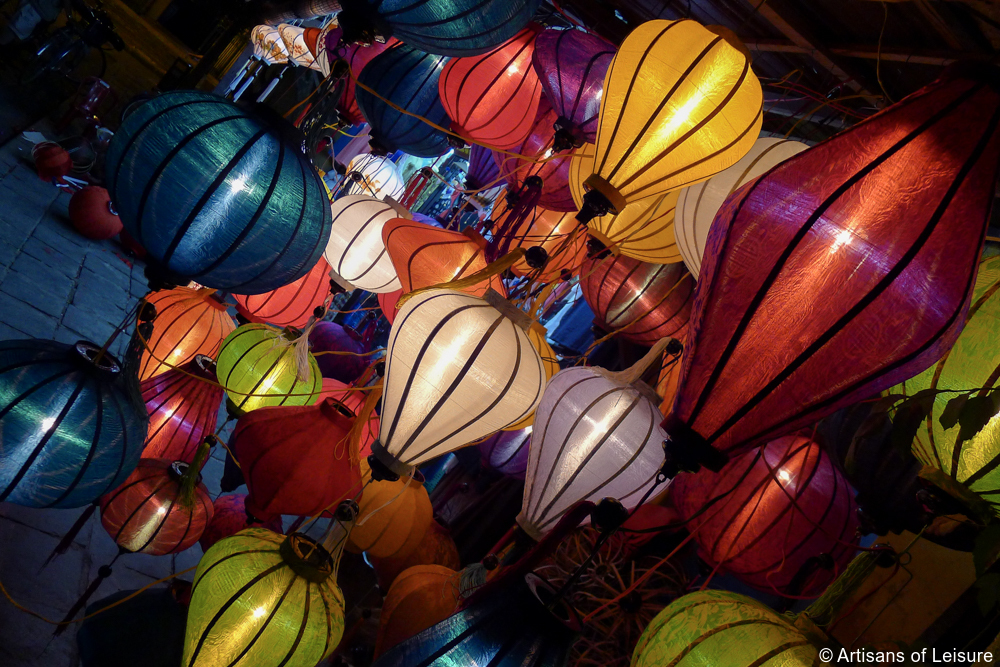
Hoi An offers many opportunities for photographers. Dusk is a particularly evocative time of day for taking pictures when the soft glow of silk lanterns illuminates buildings along the river.
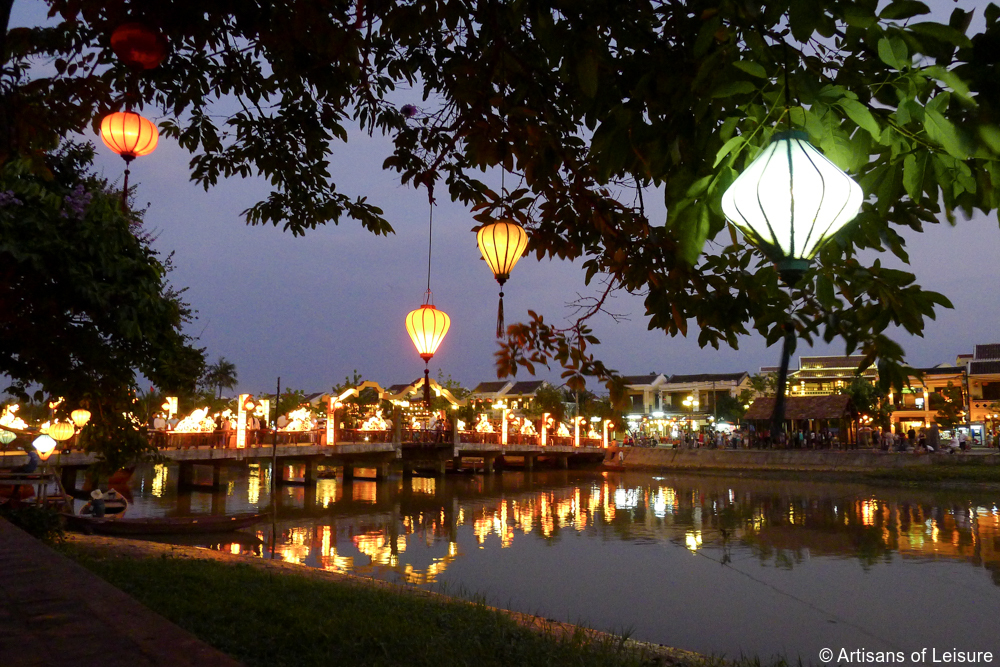
We stayed at The Nam Hai, a luxurious beachfront resort on the outskirts of Hoi An. It’s a favorite of many Artisans of Leisure travelers.
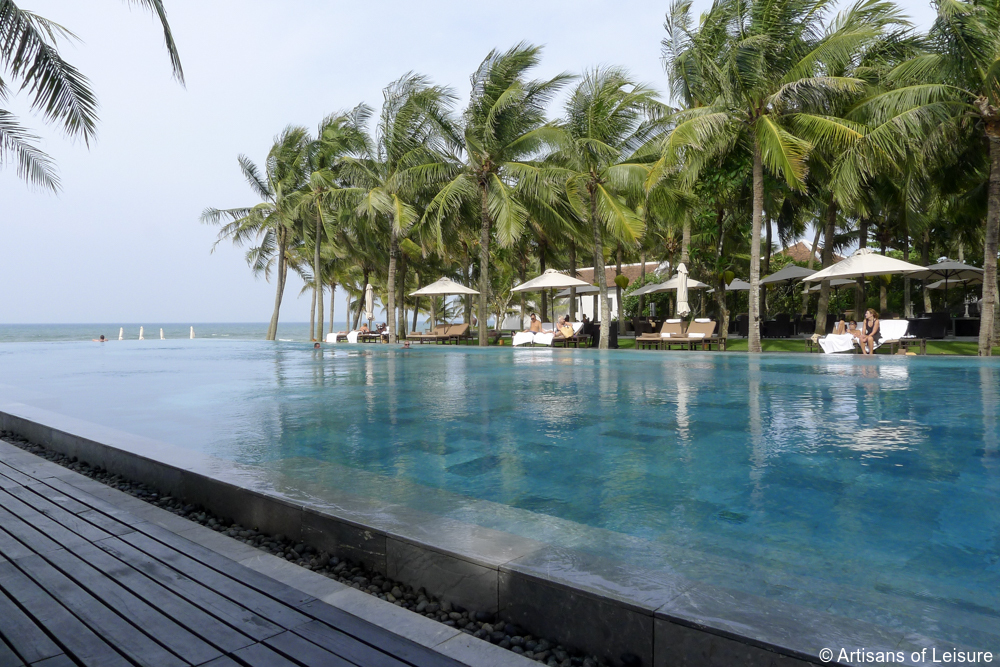
Artisans of Leisure can arrange a romantic private dinner on the beach.
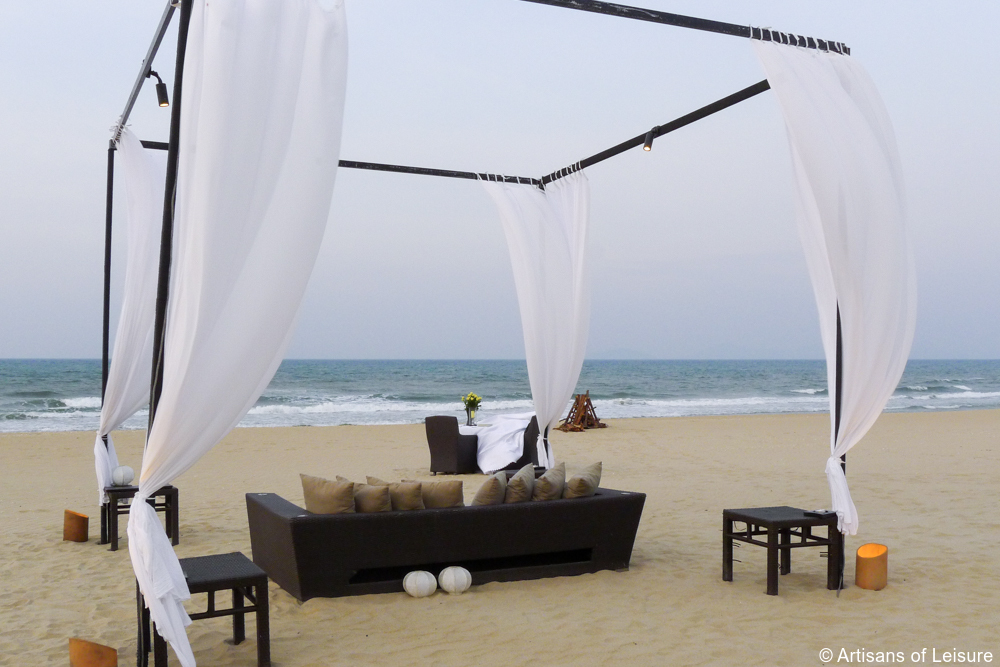
While in Hoi An, we visited a calligrapher in his studio.
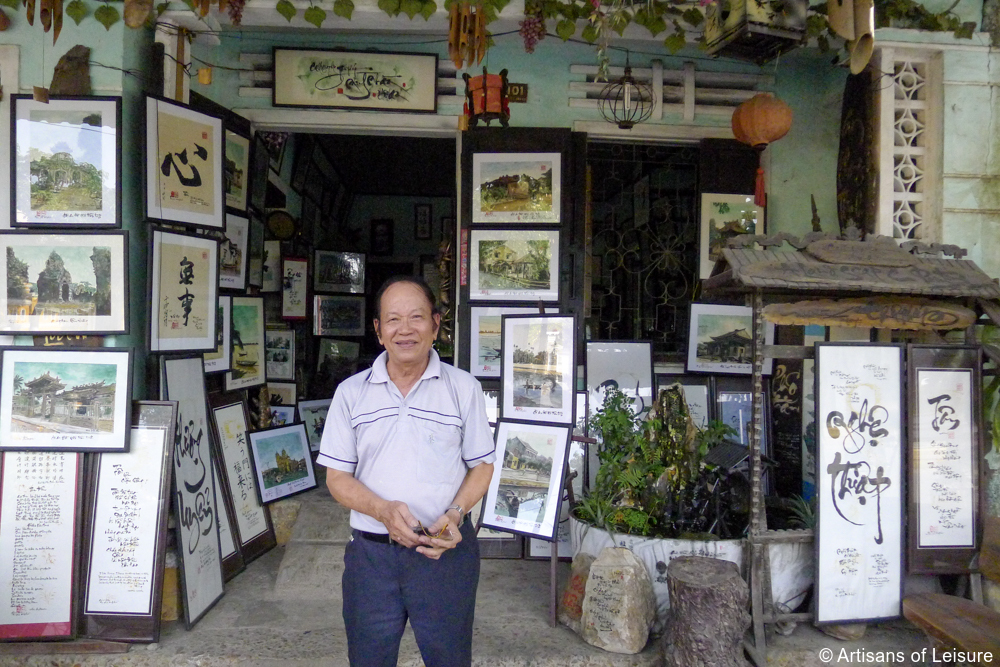
He spoke to us about the meditative nature of calligraphy and taught us a few basic concepts to try.
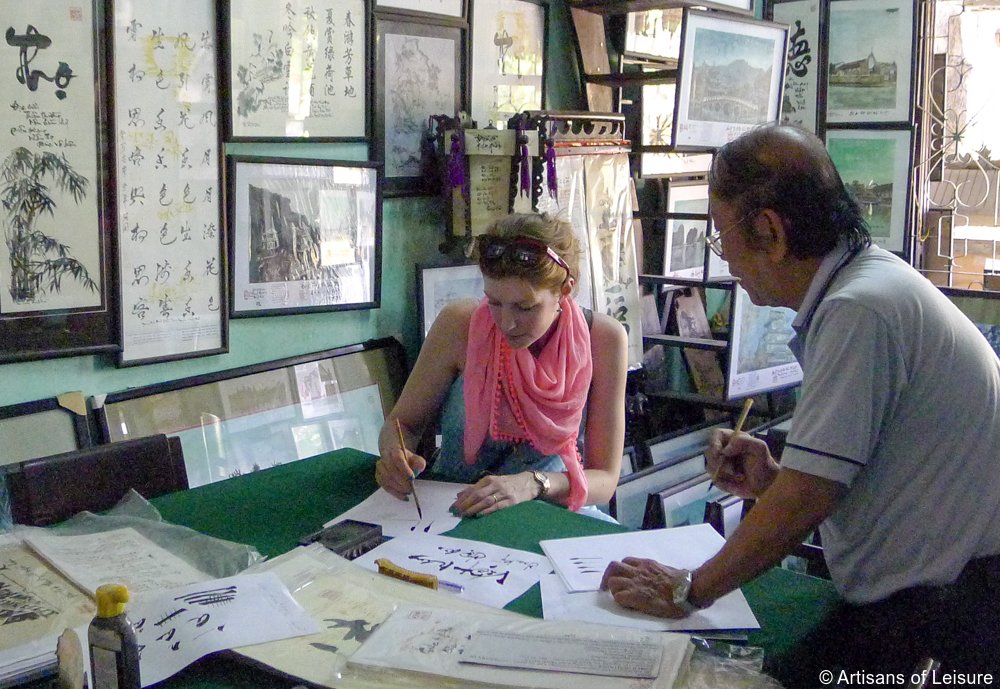
Another hands-on activity in Hoi An is lantern making. We met the patriarch of a multi-generational lantern-making family, then made our own lanterns to take home.
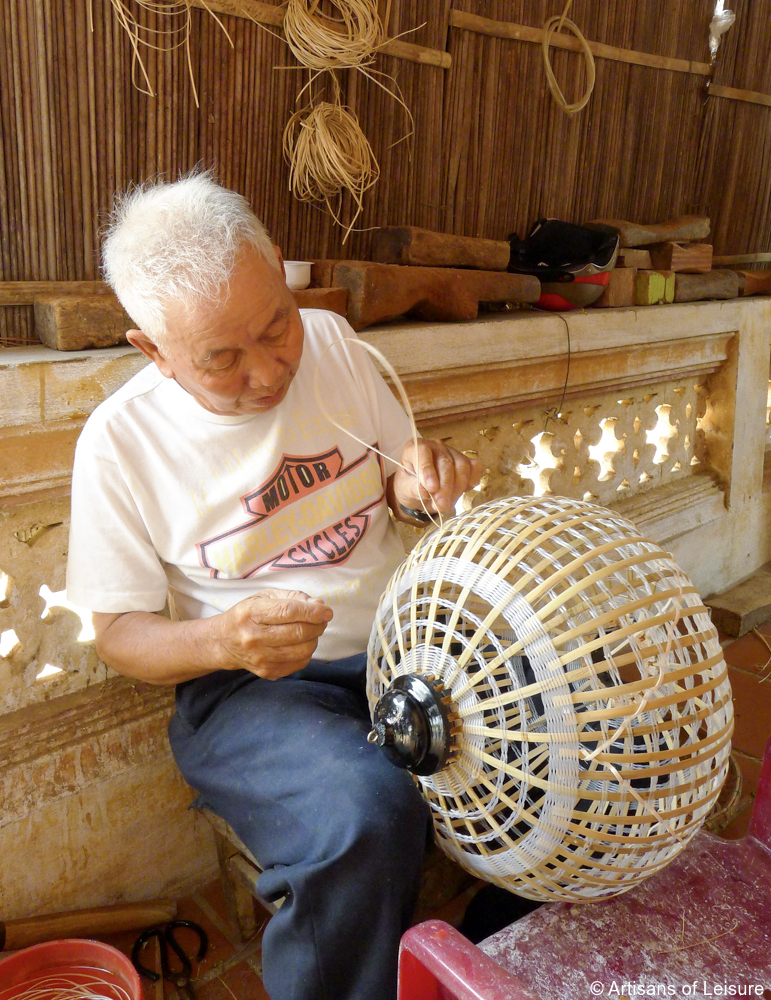
Artisans of Leisure can also arrange a number of excursions from Hoi An. A favorite is a visit to a pottery village. We watched an older couple making objects on a pottery wheel, which involved the man spinning the wheel with his foot while the woman shaped the clay with her hands.
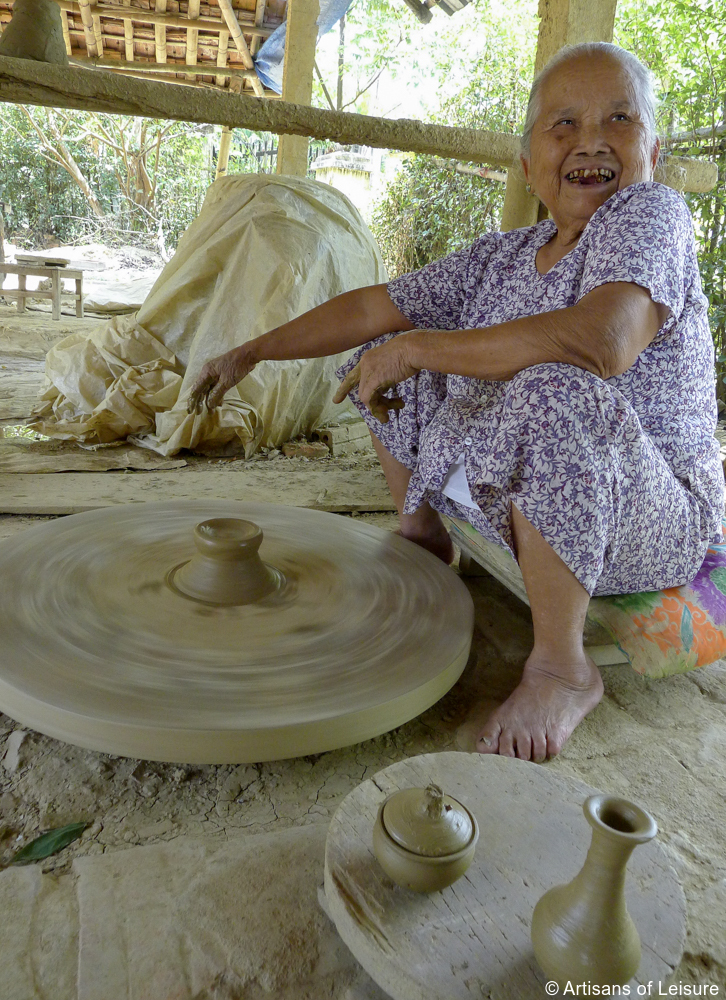
We also took an excursion to My Son, a complex of ancient Hindu temples built by the Champa Kingdom. To get to this UNESCO World Heritage Site, we drove past rice paddies and through small towns where locals dried chilies and herbs along the side of the road.
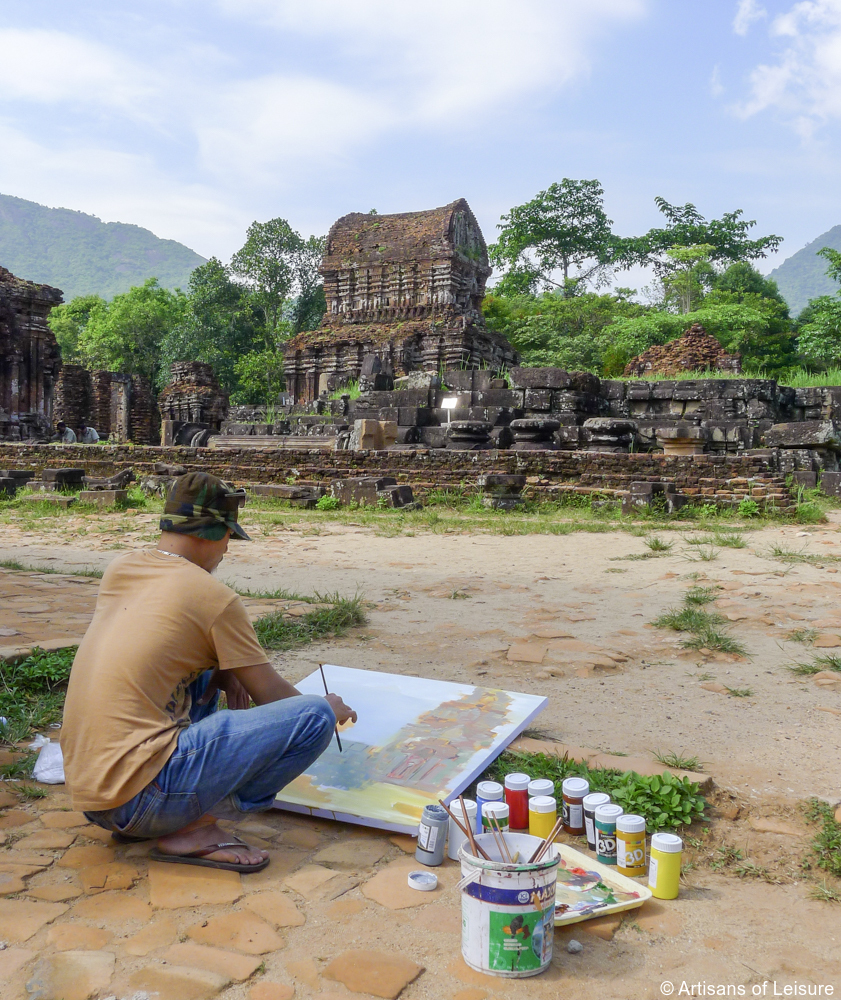
Our guide explained the history and symbolism of the various structures at My Son.
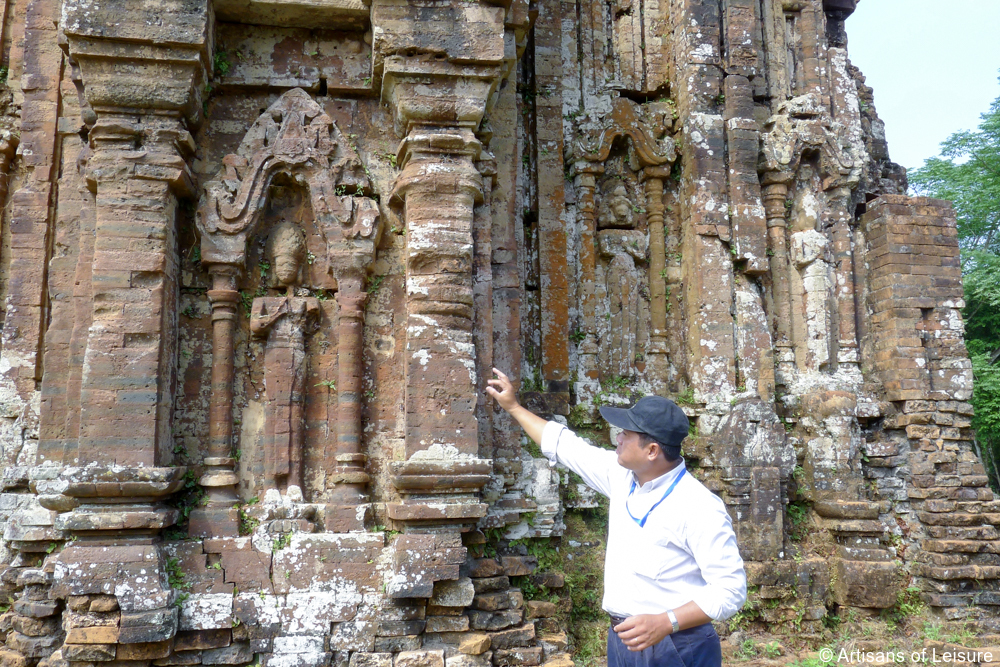
Our last stop in Vietnam was Saigon (Ho Chi Minh City), the most populous city in Vietnam.
One of the most iconic buildings in Saigon is the Reunification Palace, the former presidential palace of South Vietnam during the Vietnam War.
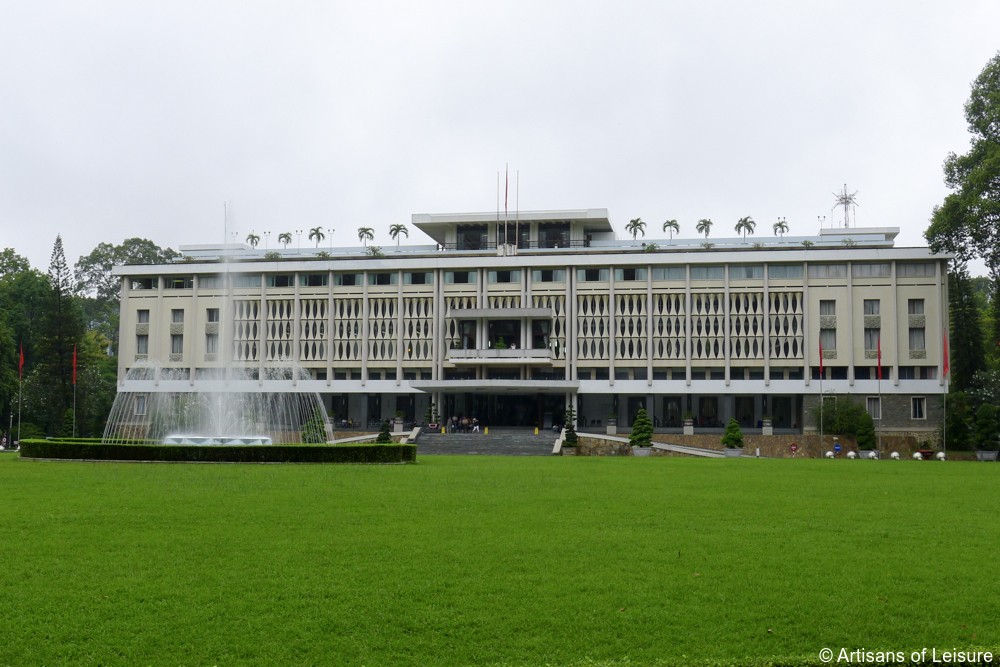
The palace showcases local interpretations of Mid-century Modern architecture and design, as in this banquet room.
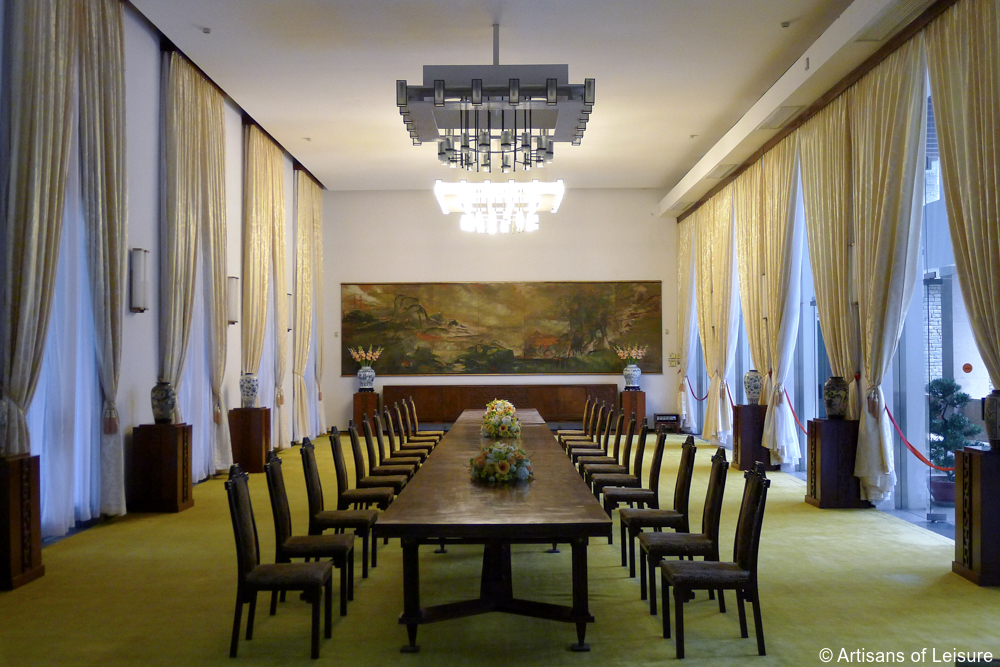
Another architectural gem in Saigon is the colonial-era post office, which is still in use.
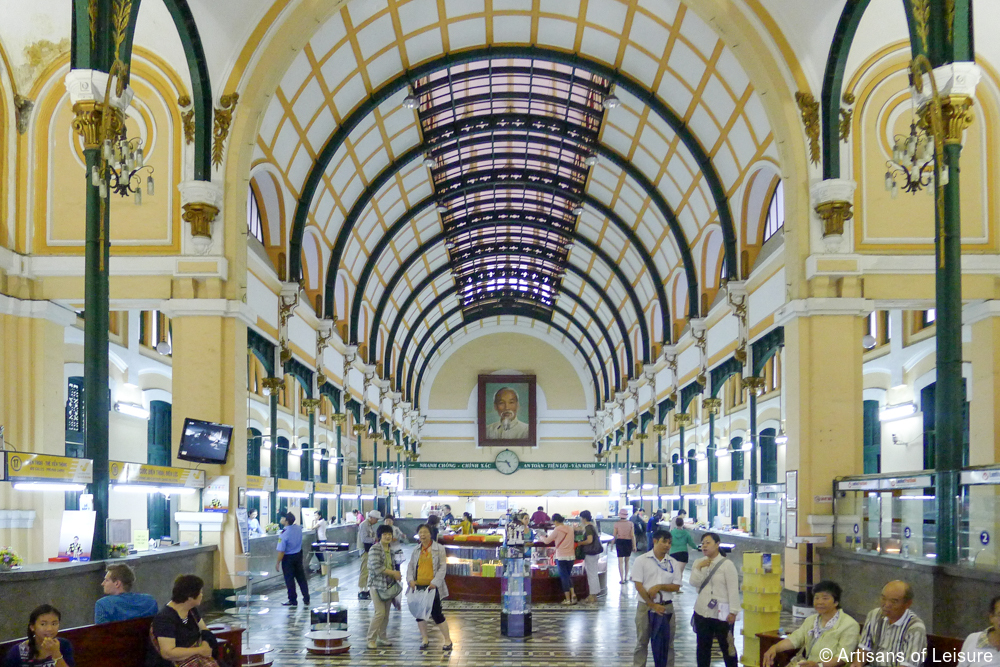
Saigon buzzes with a seemingly endless stream of scooters. A food and nightlife tour of the city from the back of a vintage Vespa was a highlight of our trip. We joined thousands of locals on their daily cruise in the cool evening air.
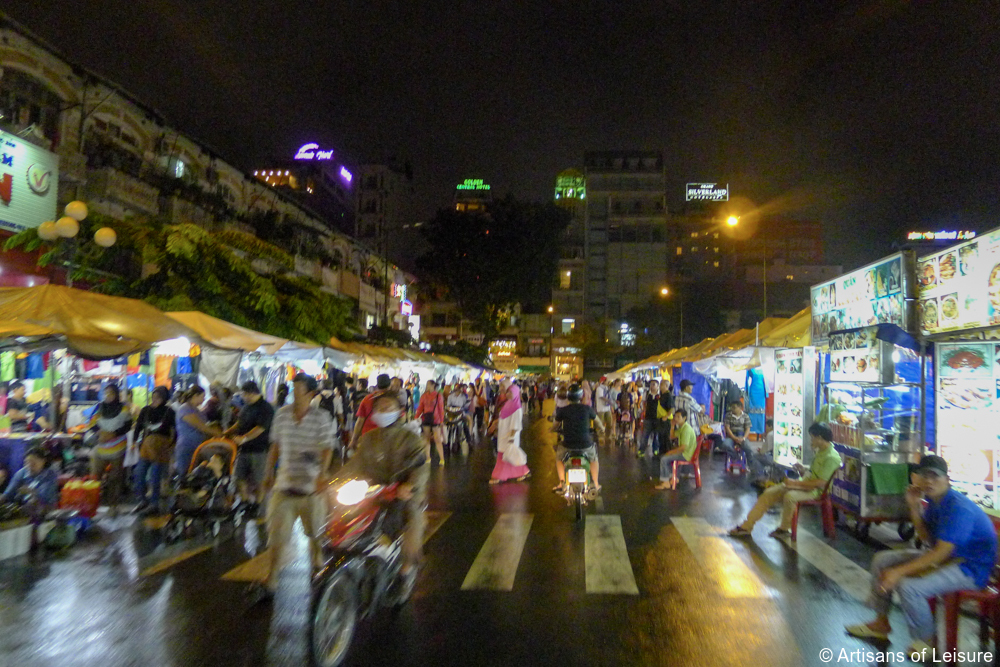
During the tour, we tried several street food specialties, such as banh xeo, a shrimp crepe wrapped in a spicy mustard leaf.
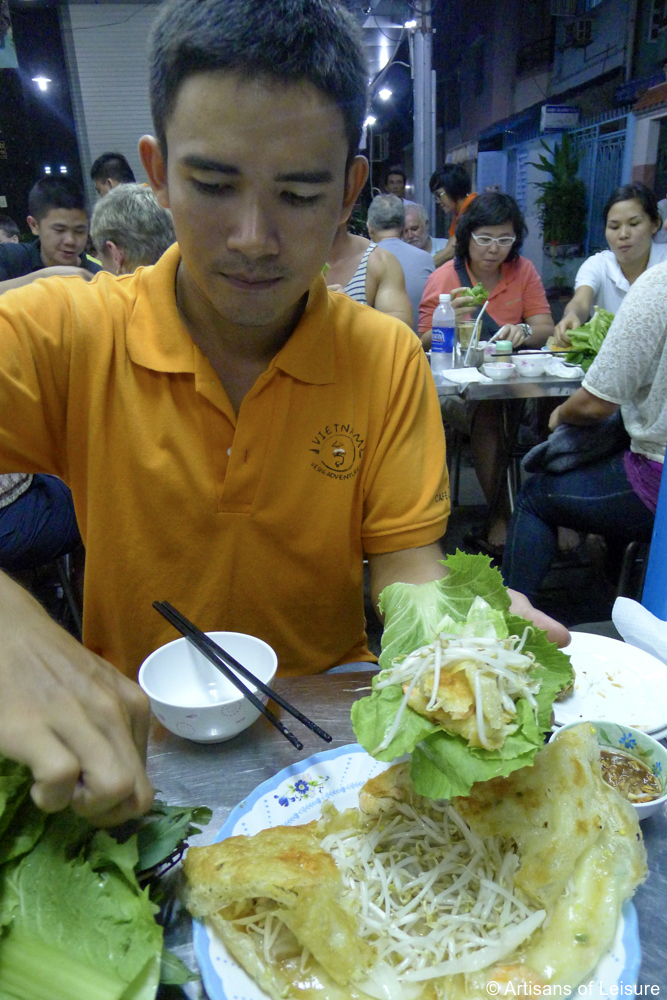
We also stopped at a local bar for Vietnamese coffee and live music.
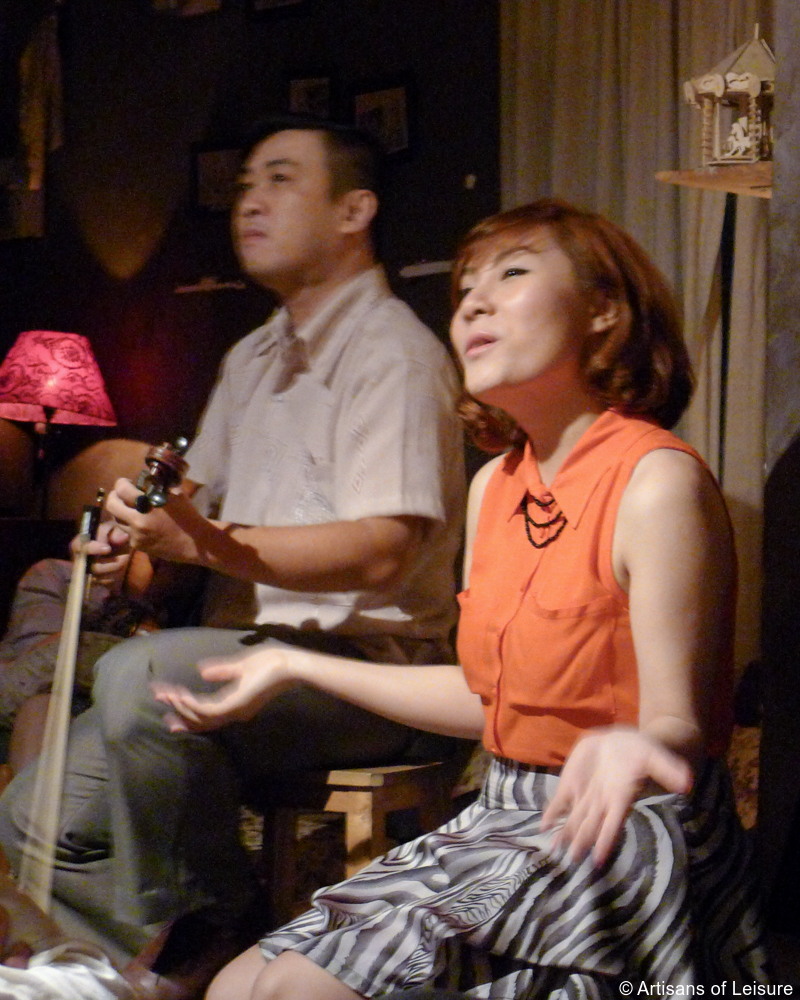
We really liked staying at the elegant Park Hyatt Saigon, which was built in a colonial style.
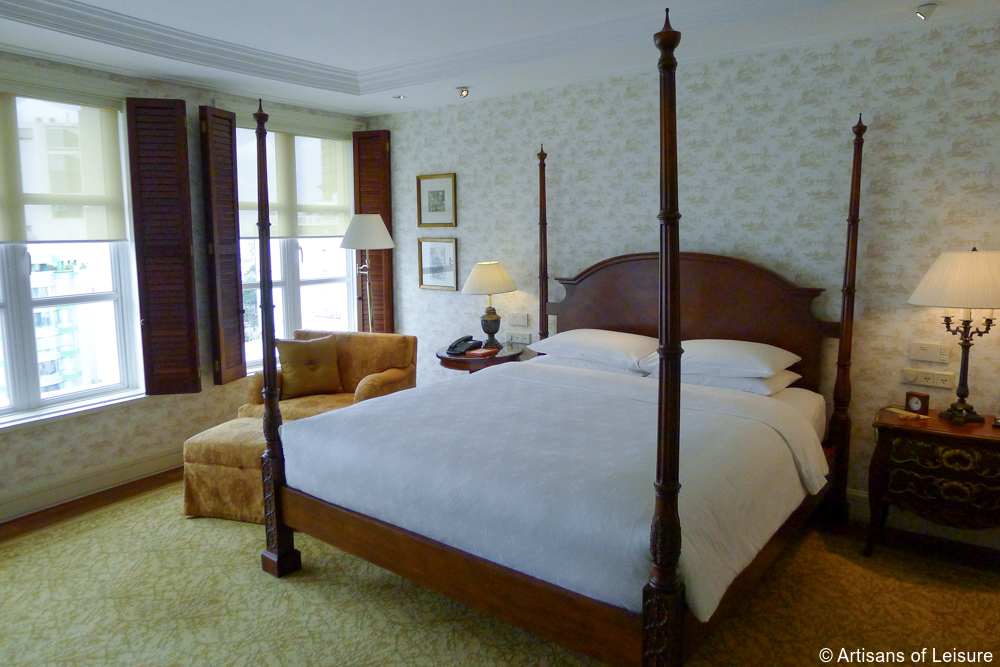
Saigon is a good base for many interesting excursions. We especially enjoyed visiting the Cu Chi Tunnels, an underground network of passages and living spaces used by the Viet Cong during the Vietnam War. Our guide did a great job of explaining the fascinating history of the site as well as the tactics used by the soldiers who hid there.
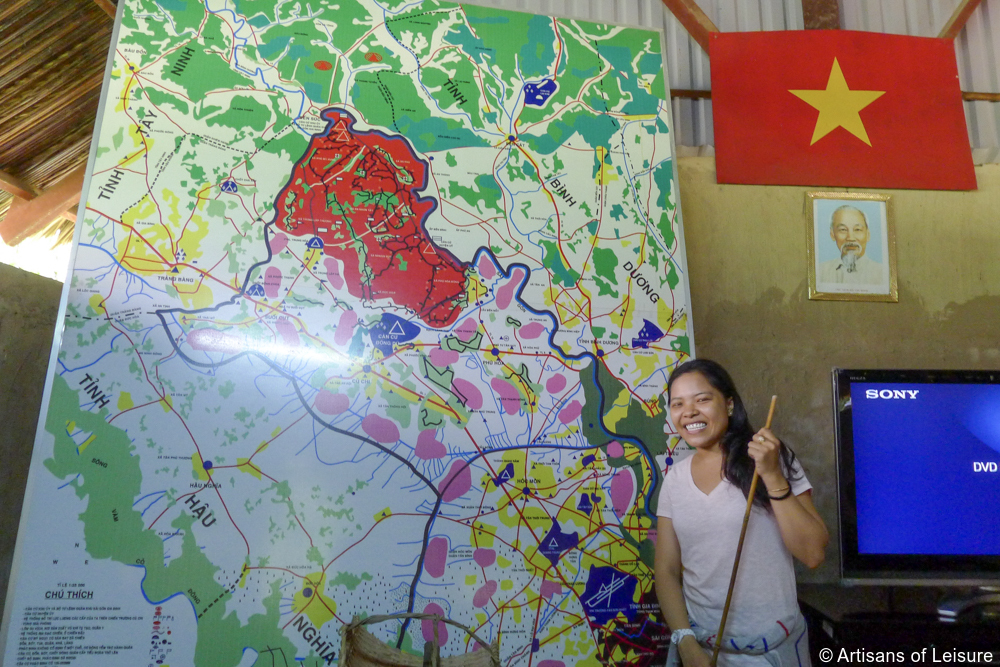
Our guide opened one of the tiny entrances to the tunnels.
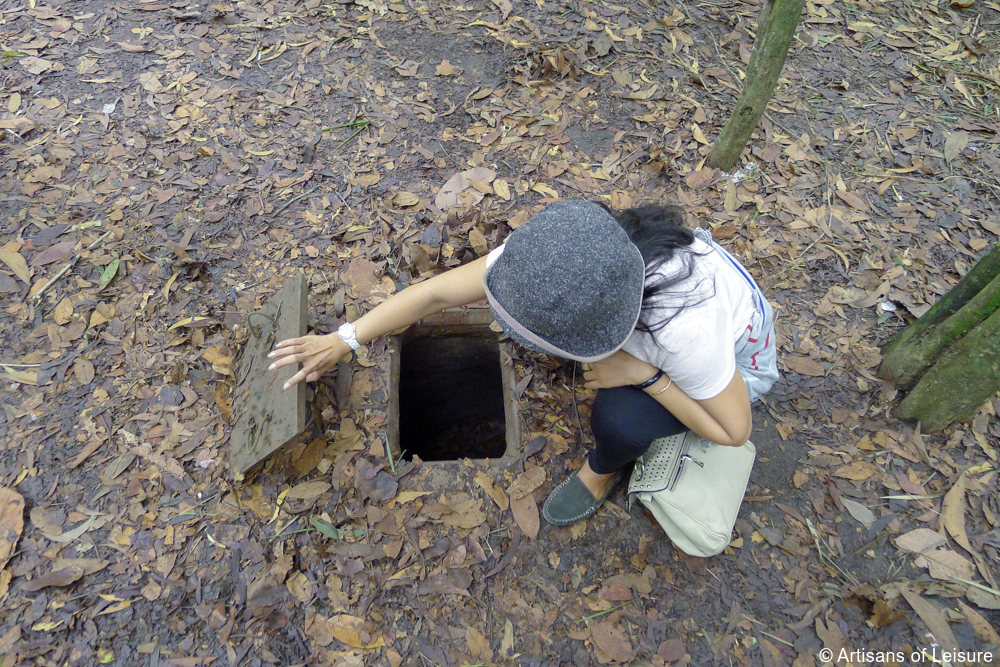
A day or overnight excursion to the Mekong Delta is another great option. Filled with verdant rice paddies and lush orchards, this fertile area is one of Vietnam’s most important agricultural regions. We enjoyed a sampan ride through one of the many canals crisscrossing the delta.
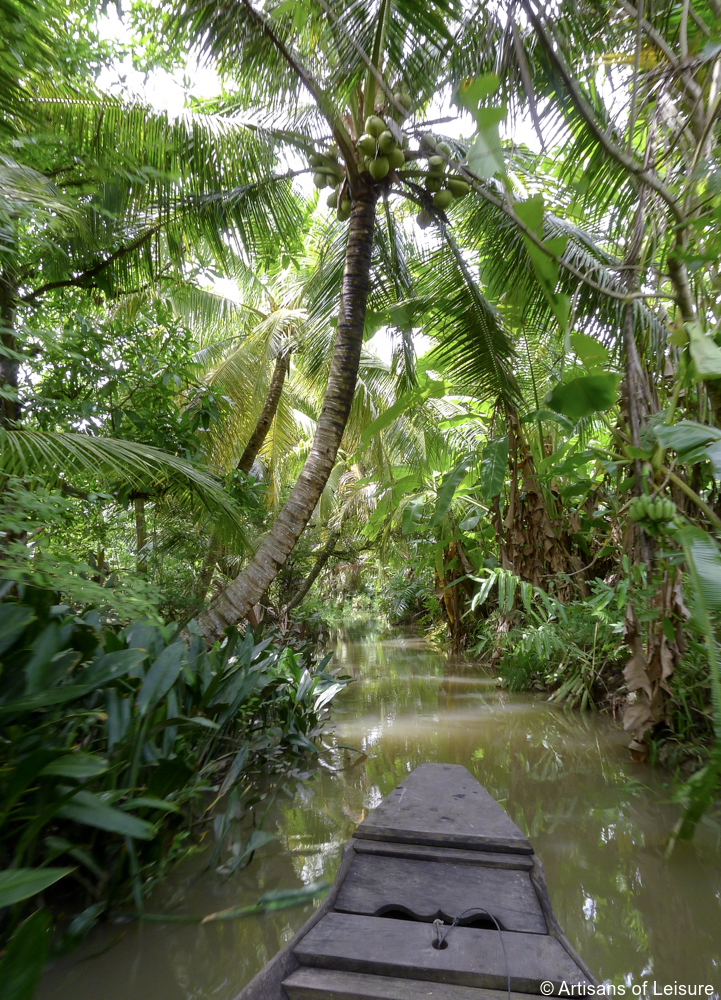
We also visited a fruit orchard. The owner greeted us with a spread of fruit from his orchard— including rambutans, longans, jackfruit, pineapple and bananas—which we ate under the shade of mango and pomelo trees.
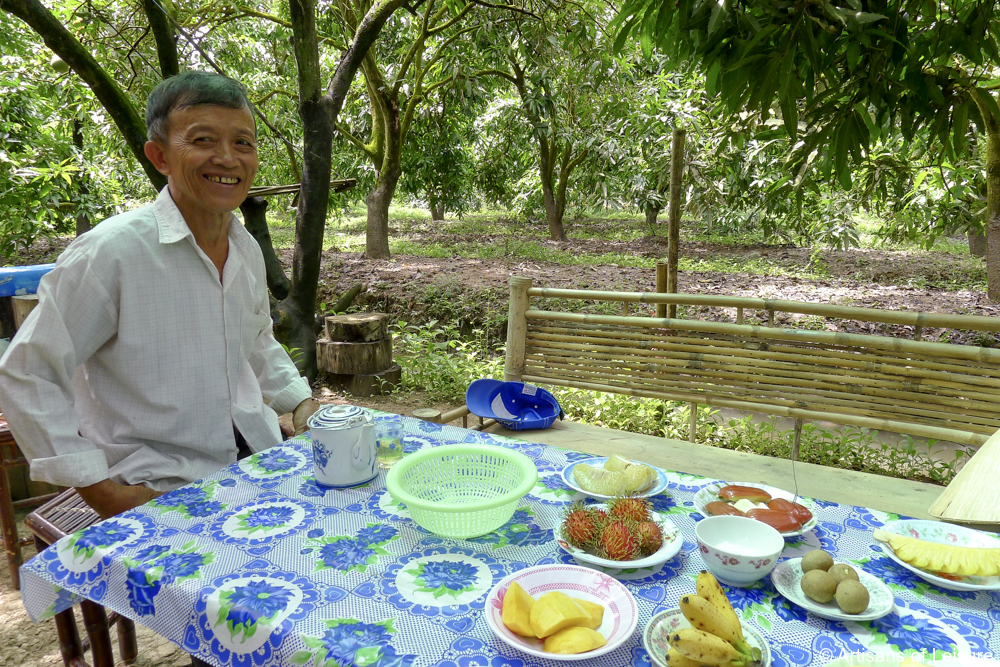
Then, we biked narrow paths among orchards…
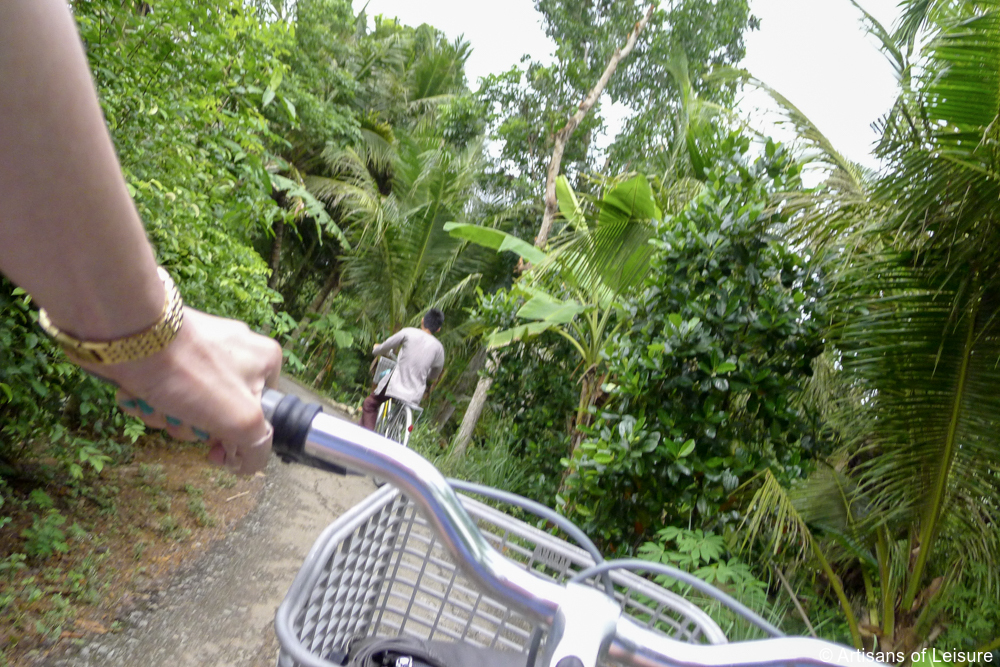
…to a house built in 1914. The house had beautiful carved wood details and a stone portico overlooking a dense garden.
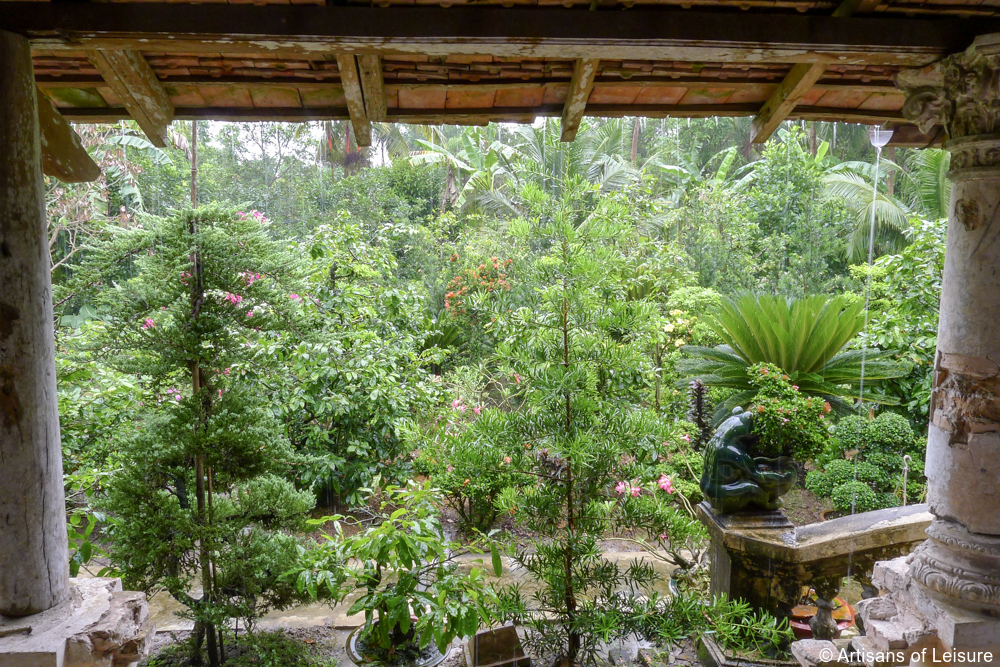
The owner of the house prepared a delicious lunch spread for us. The local dishes included fried fish, cabbage soup, spring rolls, sliced pork and steamed vegetables.
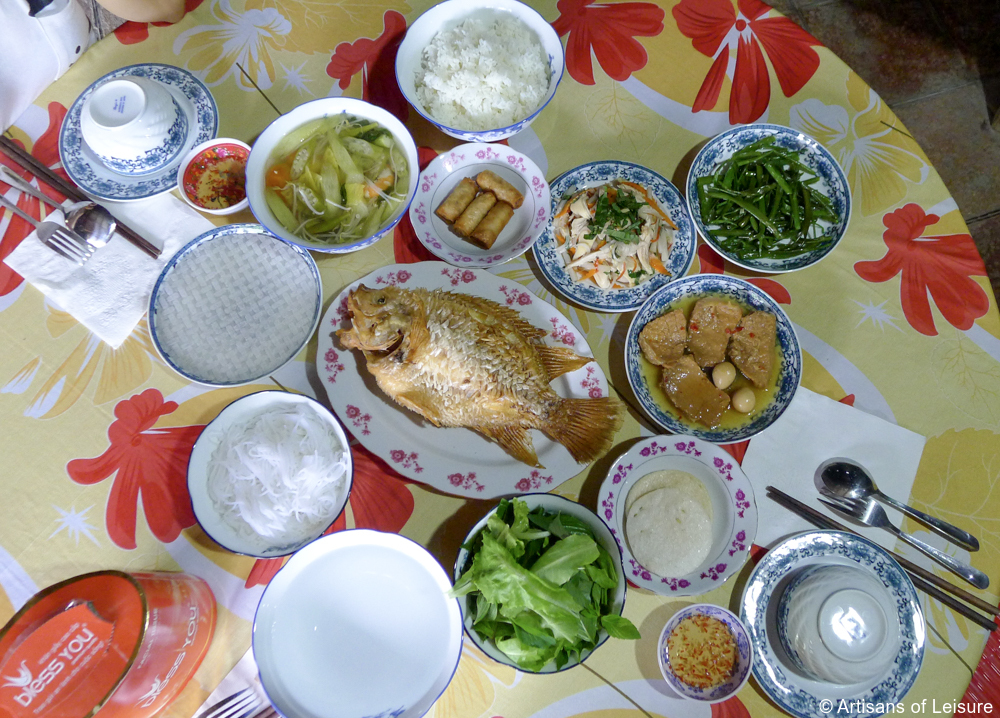
Contact Artisans of Leisure to begin planning a private tour of Vietnam featuring cultural highlights and insider experiences throughout the country.
Destinations: Asia, Southeast Asia, Vietnam
Tags: art galleries, Asia tours, Asian food, cooking class, culinary travel, Hanoi, history, Hoi An, markets, nightlife, Saigon, Southeast Asia, temples, Vietnam tours, Vietnamese culinary tour, yoga

 MENU
MENU